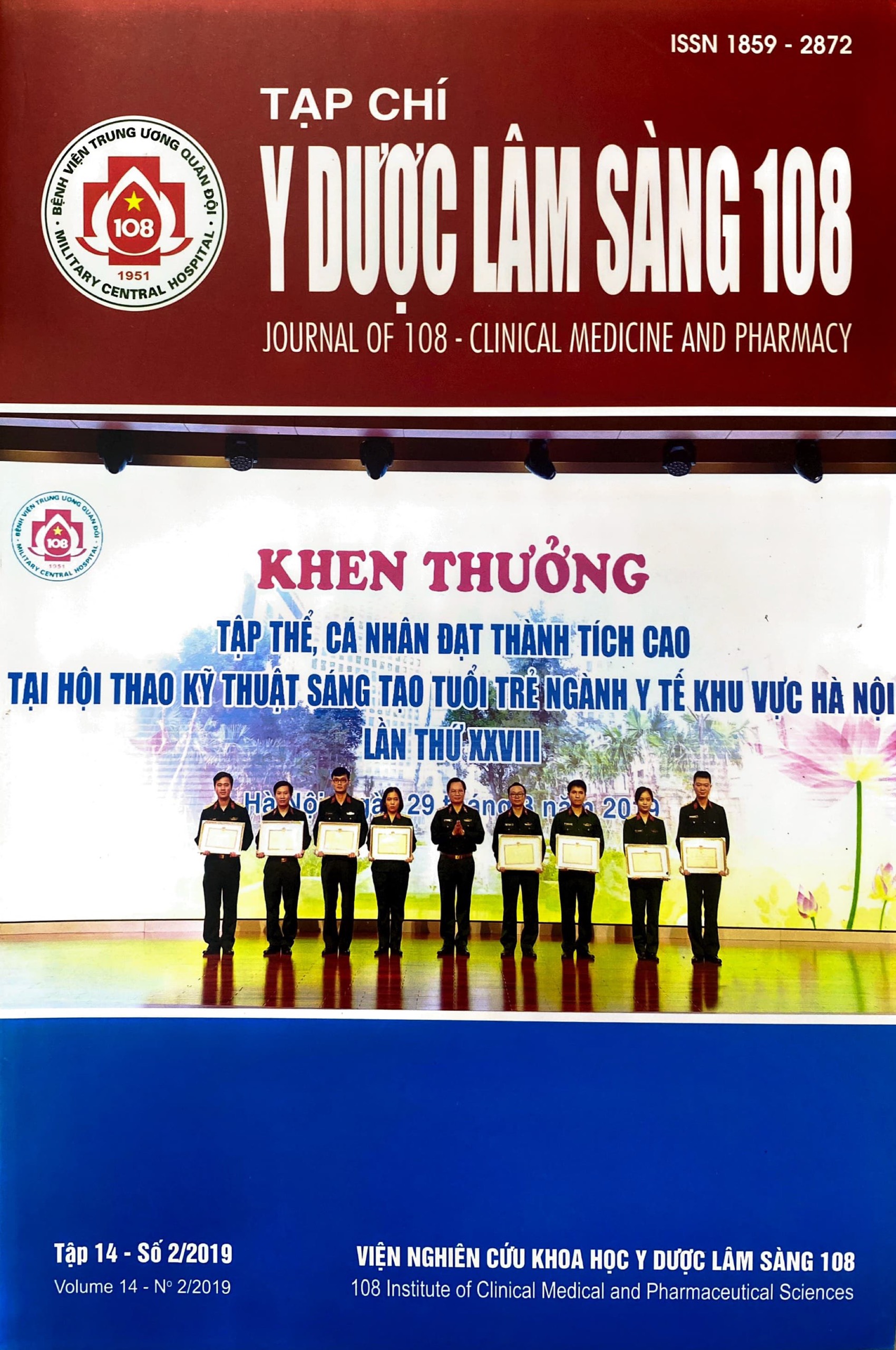Hemodynamic effects of intra-aortic balloon pump counterpulsation (IABP) therapy in patients with cardiogenic shock after myocardial infarction
Main Article Content
Abstract
Objective: To assess the effectiveness and safety of intra-aortic balloon pump counterpulsation (IABP) in hemodynamic support to patients with cardiogenic shock due to myocardial infarction. Subject and method: Multicenter prospective study on 45 patients at the 108 Military Central Hospital and Hanoi Heart Hospital from 2012 to 2017. Result and conclusion: Hemodynamic indexes (heart rate, arterial blood pressure, cardiac index-CI, left ventricular ejection fraction - EF, systemic vascular resistance - SVR) recovered rapidly after IABP placement. There were statiscally significant reductions in the plasma lactate concentration, doses of vasopressor and inotropes after 24 and 48 hours, (p<0.005). The median duration to recovery from shock was 24.1 ± 6.2 hours and the survival rate was 57.8%. Complications of infection: 8.8%, thrombocytopenia: 8.8% and limb ischemia: 4.4%.
Article Details
References
2. Bolooki H (1998) Clinical application of intra-aortic balloon pump. 3rd ed.
3. Joel K Kahn, MD, FACC, FSCAI (2004) Intra-aortic balloon pumping – theory and clinical applications in the 21st century, a monograph for the clinician. US Cardiology 1(1): 1-6.
4. Marc Cohen, Philip Urban et al (2003) IABP in US and non-US centres: Results of the Benchmark Registry. European heart J (24): 1763-1770.
5. Osama EA, Thore HP, Jan LS et al (1998) Intraaortic balloon pump in open heart operations: 10-years follow-up with risk analysis. Ann Thorac Surg (65): 741-7476
6. Thiele, Holger et al (2015) Management of cardiogenic shock. European Heart Journal 36(20): 1223-1230.
7. Thiele H, Zeymer U et al (2012) Intraaortic balloon support for myocardial infarction with cardiogenic shock. N Engl J Med 367(14): 1287-1296.
 ISSN: 1859 - 2872
ISSN: 1859 - 2872
